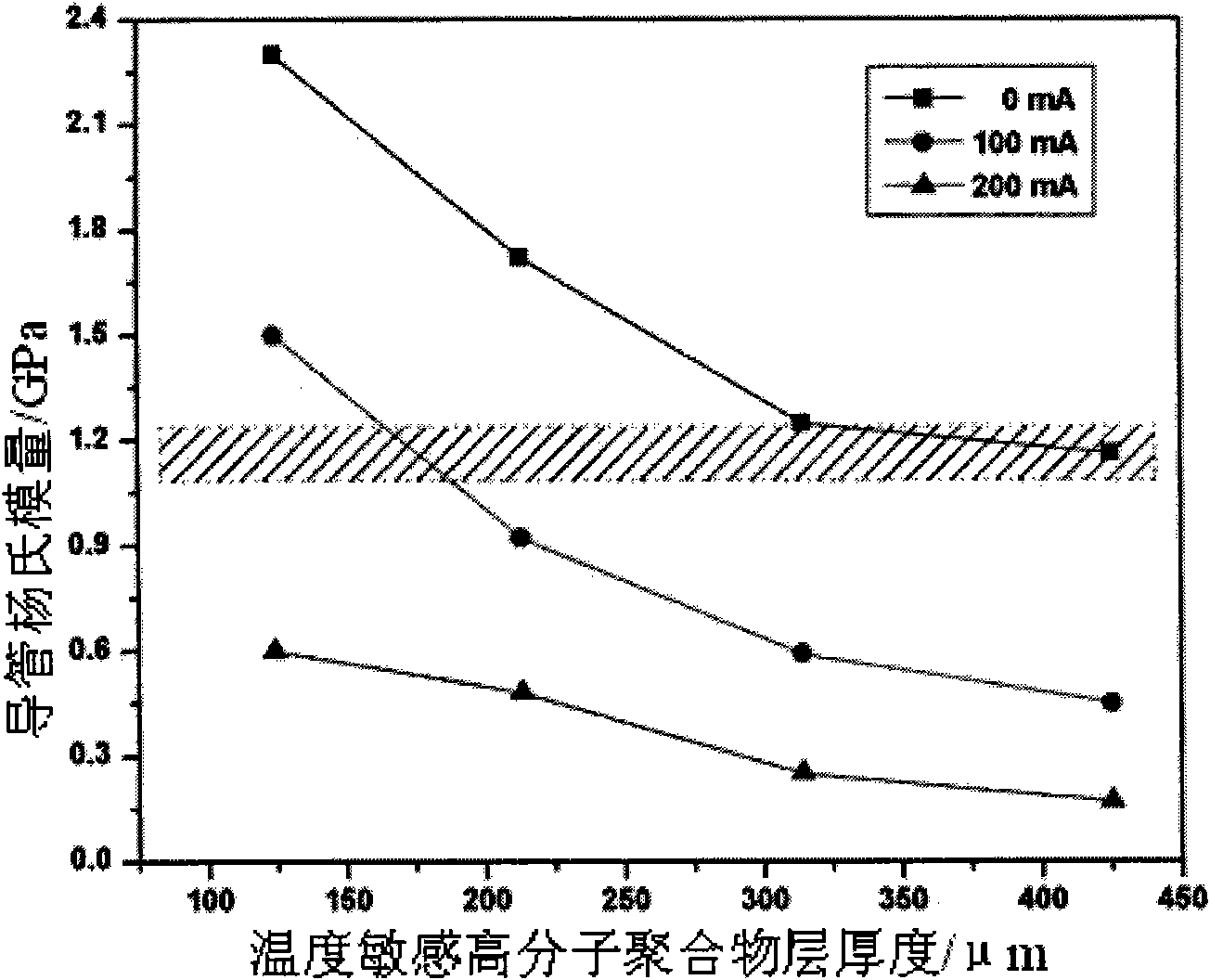Hardness-controlled intelligent conduit for clinical intervention treatment
An interventional therapy and catheter technology, applied in catheters, coatings, etc., can solve the problem of frequent replacement of catheters, and achieve the effect of small capital investment, obvious effect, and avoidance of detachment from the lesion site.
- Summary
- Abstract
- Description
- Claims
- Application Information
AI Technical Summary
Problems solved by technology
Method used
Image
Examples
Embodiment 1
[0027] Laboratory Preparation of Smart Catheters
[0028] A commercially available 32 μm thick polyimide tube (inner diameter of 1.14mm, 0.045") was fixed on a thin metal round rod with the same inner diameter, and the outer surface of the polyimide tube was coated by electroless plating. After the surface is uniformly plated with about 25nm thick copper (resistance is 30Ω), the paraffin is dissolved in the organic solvent chloroform and then spin-coated on the outer surface of the polyimide tube coated with a metal layer. The thickness of the paraffin layer depends on the concentration of the paraffin organic solution. and spin-coating speed adjustment, spin-coat paraffin layers with a thickness of 124, 213, 314, and 425 μm in turn according to this method. After the solvent is completely evaporated, nest it into a polyimide tube with a larger inner diameter to obtain a smart catheter , carry out hardness test on Electroforce electromagnetic dynamic static dynamic testing mac...
Embodiment 2
[0032] Industrial Production of Smart Catheters
[0033]Appropriate modifications are made to the existing catheter process, that is, the outer tube, temperature-sensitive high molecular polymer and inner tube are co-extruded by composite extrusion, and the tube wall can be reinforced with metal wire or mesh. If an additional metal resistance layer is required, a thin layer of metal can be plated on the outer surface of the inner tube layer by electroless plating, and the time of electroless plating can be controlled to adjust the resistance.
PUM
 Login to View More
Login to View More Abstract
Description
Claims
Application Information
 Login to View More
Login to View More - R&D
- Intellectual Property
- Life Sciences
- Materials
- Tech Scout
- Unparalleled Data Quality
- Higher Quality Content
- 60% Fewer Hallucinations
Browse by: Latest US Patents, China's latest patents, Technical Efficacy Thesaurus, Application Domain, Technology Topic, Popular Technical Reports.
© 2025 PatSnap. All rights reserved.Legal|Privacy policy|Modern Slavery Act Transparency Statement|Sitemap|About US| Contact US: help@patsnap.com



